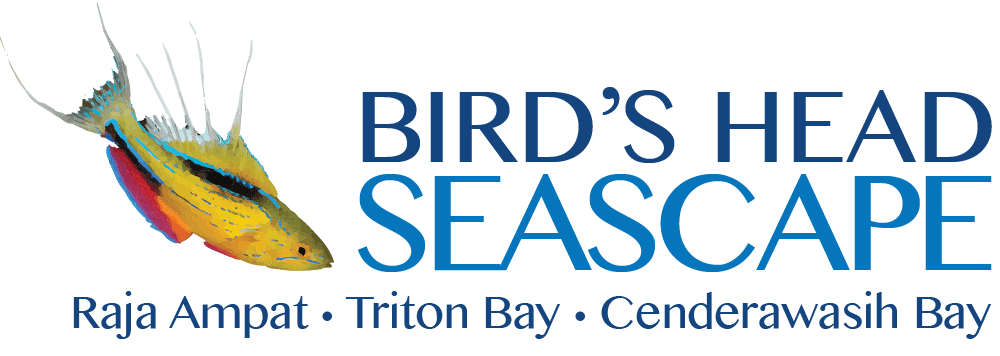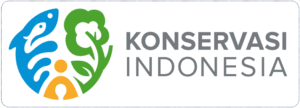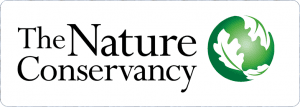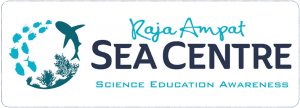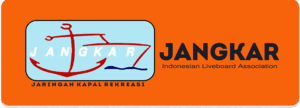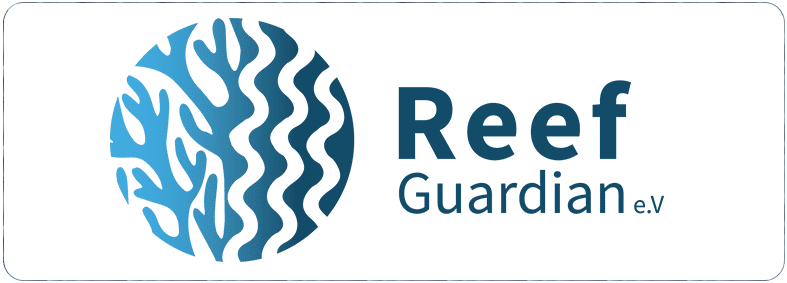Library / Research / Oceanography
Explore PDFs and information about current and past research topics. Study all of the research data from the region.
<< RETURN TO LIBRARY INDEX
| Name | Size | Hits |
|---|---|---|
 UNESCO: State of the Ocean Report 2024 UNESCO: State of the Ocean Report 2024 |
1742586838 Author(s): various authors Tags: UNESCO: State of the Ocean Description: In this State of the Ocean Report 2024, the message remains that observations and research is falling short and hence there is a lack of adequate and aggregated data. But as more states, industries and organizations realize that we need to measure in order to manage and protect marine ecosystems, we gradually get more data, get deeper into the issues, and can include new topics of research. Every indication is, however, that the ocean crisis is developing faster than our knowledge of it. We therefore need to accelerate the mobilization which is under way in the UN Decade for Ocean Science for Sustainable Development 2021-2030. We need to transform ocean science and our relationship to it. We need better knowledge as a basis for sustainable ocean planning and management, within and beyond areas of national jurisdiction. And we need a much stronger, much faster and more dynamic interplay between ocean knowledge, policy and action. 6.4 MiB |
132 |
 Climate-driven Global Redistribution of an Ocean Giant Predicts Increased Threat from Shipping Climate-driven Global Redistribution of an Ocean Giant Predicts Increased Threat from Shipping |
1733174219 Author(s): Womersley, F.C., Sousa, L.L., Humphries, N.E. et al. Tags: whale sharks, Conservation Biology, Climate Change Oceanography, Climate Change Impacts Description: Climate change is shifting animal distributions. However, the extent to which future global habitats of threatened marine megafauna will overlap existing human threats remains unresolved. Here we use global climate models and habitat suitability estimated from long-term satellite-tracking data of the world’s largest fish, the whale shark, to show that redistributions of present-day habitats are projected to increase the species’ co-occurrence with global shipping 25.5 MiB |
88 |
 Islands of Sea: The evolution, ecology and conservation of marine lake invertebrates Islands of Sea: The evolution, ecology and conservation of marine lake invertebrates |
1632165844 Author(s): Diede Louise Maas Tags: marine lakes Description: A major question of ecologists and evolutionary biologists is how biodiversity arises and how it is maintained. Biodiversity is multifaceted, and genetic diversity within populations is one of its components besides species and ecosystem diversity (Vellend and Geber, 2005). Thesis on evolution, ecology, and conservation of marine lake invertebrates. Studies of microevolution focus on intra-specific variation within populations which eventually might lead to the macroevolutionary process of speciation (Hendry et al., 2009). Genetic diversity within populations is usually measured via allele frequencies, or the number of times a variant of a gene occurs in a population. Allele frequencies can change due to mutation, selection, gene flow (migration between populations) and genetic drift (stochastic loss or gain of alleles). The fields of population genetics and genomics aim to improve our understanding of population differentiation (Charlesworth, 2010; Luikart et al., 2018), by questioning how spatial and environmental factors influence microevolutionary processes. Microevolutionary studies in marine systems are lagging behind terrestrial counterparts for several reasons (Selkoe et al., 2008, 2016), first and foremost being the difficulty to access many marine areas. Furthermore, there is a long-standing assumption that marine populations show low rates of genetic differentiation due to the lack of clear physical barriers, assumed high dispersal potential, and associated large effective population sizes (Palumbi, 1994; Ward, 1994; Bowen et al., 2013). While this assumption has both been confirmed and rejected for different organisms (Bierne et al., 2016), in any case the open nature of the marine realm makes defining marine populations a priori challenging. Still, recent studies are showing more population structure in marine ecosystems and at finer spatial scales (1-100kms) than expected by predicted larval dispersal distances (Hauser and Carvalho, 2008; Marshall et al., 2010; Van Wyngaarden et al., 2016; Bernatchez et al., 2018). Further elucidating marine population genetic patterns on small scales and shedding light on what drives marine population connectivity and adaptation is particularly pressing in a changing world. This thesis aims to disentangle relative importance of neutral (geographic and dispersal barriers) and selective (local adaptation) processes on marine population genomic variation using the unique opportunity presented by marine lakes which offer replicated, independent natural laboratories of evolution and ecology. 116 MiB |
366 |
 Fifteen Years Of Lessons From The Seascape Approach: A Framework For Improving Ocean Management At Scale Fifteen Years Of Lessons From The Seascape Approach: A Framework For Improving Ocean Management At Scale |
1623274618 Author(s): Shannon E. Murphy, Ginny Farmer, Laure Katz, Mark V. Erdmann and more Tags: Description: Seascapes are large, multiple-use marine areas, defined scientifically and strategically, in which government authorities, private organizations, and other stakeholders cooperate to conserve the diversity and abundance of marine life and promote human well-being. This approach has been applied by global nonprofit partnerships in five seascapes across eight countries and has drawn on the practical experience of more than 250 partners over 15 years. These experiences have helped define the Seascape approach, consisting of nine essential elements, for achieving effective ocean governance and management from local to regional levels. Lessons learned relate to using integrated planning frameworks, community-led and locally owned initiatives, and a network of partners and a “backbone” organization for effective Seascape planning and design; promoting diversification in funding sources, private sector engagement, and the transition of nonprofit roles to ensure durability of a Seascape; and ensuring Seascape outcomes are measured through robust monitoring and evaluation frameworks and communicated effectively. Seascapes are unique in their ability to create a pathway toward sustainable development. To ensure support and amplification of the approach, they must align with diversified funding opportunities and global priorities outlined in international United Nations conventions focused on sustainable development and ocean health. 4.7 MiB |
51635 |
 Heavy Metals Contaminants In The Eggs And Temperatures Of Nesting Beaches Of Sea Turtles In Kaimana, West Papua, Indonesia Heavy Metals Contaminants In The Eggs And Temperatures Of Nesting Beaches Of Sea Turtles In Kaimana, West Papua, Indonesia |
1600217206 Author(s): RICARDO F. TAPILATU, HENGKI WONA, RIMA HS. SIBURIAN, and SEFRIANTO T. SALEDA Tags: Description: Biodiversitas 21: 4582-4590. Etna Bay and Venu Island in Kaimana, West Papua, Indonesia are two of many areas that sea turtles use during the nesting season. Here, we report data on heavy metals contaminants from a sample of eggs of green (Chelonia mydas) and hawksbill (Eretmochelys imbricata) turtles collected from a subset of two nests during the 2016 nesting season at Venu Island, Kaimana, West Papua, Indonesia. Three heavy metals contaminants (i.e. mercury, cadmium, arsenic) found in eggs exceeded the established safety limits for human consumption. 0.9 MiB |
590 |
 Recognizing Peripheral Ecosystems In Marine Protected Areas: A Case Study Of Golden Jellyfish Lakes in Raja Ampat, Indonesia Recognizing Peripheral Ecosystems In Marine Protected Areas: A Case Study Of Golden Jellyfish Lakes in Raja Ampat, Indonesia |
1600215832 Author(s): Diede L. Maas, Agustin Capriati, Awaludinnoer Ahmad, Mark V. Erdmann, Machiel Lamers, Christiaan A. de Leeuw, Luca Prins, Purwanto, Amanda P. Putri, Ricardo F. Tapilatu, Leontine E. Becking Tags: Description: Peripheral marine ecosystems can harbor endemic diversity and attract tourism attention, yet are generally not included in conservation management plans due to their remoteness or inland positioning. A case study in Raja Ampat of seven landlocked marine lakes containing golden jellyfish (Mastigias spp.) was conducted to address the lack of fundamental insights into evolutionary, ecological and social contexts of these ecosystems. An interdisciplinary approach was taken towards identifying the jellyfish lakes as distinct management units in order to incorporate them into existing Marine Protected Areas. Mastigias papua populations showed strong genetic (ϕST: 0.30–0.86) and morphological (F = 28.62, p-value = 0.001) structure among lakes, with putative new subspecies. Risks arising from rapid increase in tourism to Raja Ampat (30-fold since 2007) warrant restrictions on jellyfish lake use. Recommendations are provided for adaptive management and science-based conservation policies for jellyfish lakes across Indonesia. 1.0 MiB |
435 |
 Recognizing peripheral ecosystems in marine protected areas: A case study T of golden jellyfish lakes in Raja Ampat, Indonesia Recognizing peripheral ecosystems in marine protected areas: A case study T of golden jellyfish lakes in Raja Ampat, Indonesia |
1596666229 Author(s): Diede L. Maas, Agustin Capriati, Awaludinnoer Ahmad, Mark V. Erdmann, Machiel Lamers, Christiaan A. de Leeuw, Luca Prins, Purwanto, Amanda P. Putria, Ricardo F. Tapilatu, Leontine E. Beckinga Tags: Description: Peripheral marine ecosystems - such as marine lakes, anchialine caves, and cenotes - attract significant attention from tourism due to their relatively pristine environments and propensity to harbor endemic diversity. Tourism interest can have socio-economic benefits for local communities, can lead to an awareness towards management of the ecosystem and prevent de- structive exploitation. However, if tourism is not managed effectively, recreational use of peripheral marine ecosystems may have devastating effects, particu- larly in combination with other stressors such as climate change. Prime examples of peripheral ecosystems that are tourism magnets are “jellyfish lakes”, landlocked marine lakes containing dense populations of golden jellyfish, Mastigias spp. 1.7 MiB |
946 |
 Movement patterns of whale sharks in Cenderawasih Bay, Indonesia, revealed through long-term satellite tagging Movement patterns of whale sharks in Cenderawasih Bay, Indonesia, revealed through long-term satellite tagging |
1596666053 Author(s): Megan M. Meyers, Malcolm P. Francis, Mark Erdmann, Rochelle Constantine and Abraham Sianipar Tags: Description: The world’s largest fish, the whale shark, Rhincodon typus, is a highly mobile species that occurs in tropical and warm temperate seas worldwide (Rowat and Brooks 2012). Whale sharks, Rhincodon typus, are found circumglobally in tropical and warm temperate seas, exhibiting a range of residency and movement patterns. To determine spatio-temporal habitat use by juvenile male whale sharks in Cenderawasih Bay, Indonesia, we collected data from June 2015 to November 2016 using 16 fin-mounted satellite tags that provided exceptionally long track durations. 1.2 MiB |
1702 |
 Tomiyamichthys eyreae, a new species of Shrimpgoby. Tomiyamichthys eyreae, a new species of Shrimpgoby. |
1596665631 Author(s): Gerald Allen, Mark Erdmann, Meity Mongdong Tags: Description: A new species of gobiid fish, Tomiyamichthys eyreae, is de- scribed from the Daram island group in the Southeast Misool marine protected area of the Raja Ampat Archipel- ago in West Papua Province, Indonesia, on the basis of two male specimens, 1.5 MiB |
757 |
 Choeroichthys Hadiatyae, a new species of Pipefish Choeroichthys Hadiatyae, a new species of Pipefish |
1596665473 Author(s): Gerald Allen, Mark Erdmann, Nur Hidayat Tags: Description: A new species of syngnathid pipefish, Choerichthys hadiatyae is described from the Fakfak Peninsula of West Papua Province, Indonesia on the basis of a single female speci- men, 34 mm SL collected from coral reef habitat in 2–15 m depth. 0.4 MiB |
482 |
 Heteroconger Guttatus-garden Eel Heteroconger Guttatus-garden Eel |
1596655822 Author(s): Gerald Allen, Mark Erdmann, Meity Mongdong Tags: Bird's Head Seascape, taxonomy, coral reef fishes, ichthyology, systematics, Indo-Pacific Ocean, Anguilliformes Description: The new species of heterocongrine garden eel, Heteroconger guttatus, n. sp., is described from West Papua, Indonesia, based on 42 specimens measuring 188–442 mm TL. 1.6 MiB |
741 |
 BAF-Monthly Update Aug 2019 (EN) BAF-Monthly Update Aug 2019 (EN) |
1567097026 Author(s): Blue Abadi Fund Tags: Description: Blue Abadi Fund Update-August 2019 0.6 MiB |
509 |
 Patterns of species richness and the center of diversity in modern Indo- Pacific larger foraminifera Patterns of species richness and the center of diversity in modern Indo- Pacific larger foraminifera |
1566602303 Author(s): Meena Förderer, Dennis Rödder & Martin R. Langer Tags: Description: Symbiont-bearing Larger Benthic Foraminifera (LBF) are ubiquitous components of shallow tropical and subtropical environments and contribute substantially to carbonaceous reef and shelf sediments. Climate change is dramatically affecting carbonate producing organisms and threatens the diversity and structural integrity of coral reef ecosystems. Recent invertebrate and vertebrate surveys have identified the Coral Triangle as the planet’s richest center of marine life delineating the region as a top priority for conservation. We compiled and analyzed.... 1.9 MiB |
932 |
 Status of sea turtle populations and its conservation at Bird’s Head Seascape, Western Papua, Indonesia Status of sea turtle populations and its conservation at Bird’s Head Seascape, Western Papua, Indonesia |
1499803740 Author(s): Ricardo Tapilatu, Hengki Wona, Petrus Batubara Tags: Description: Bird’s Head Seascape region in the northwest of Papua contains the world’s highest marine biodiversity. The area is a unique site which contains a full range of marine and coastal habitats that are important for the breeding, foraging and migration of several species of sea turtles. This survey aimed to characterize critical habitats that are in use by sea turtles across Yapen, Wondama, Manokwari and Kaimana at Bird’s Head Seascape and to assess existing and potential threats to both habitats and population. 0.4 MiB |
1515 |
 Penentuan Daerah Konservasi Laut Berdasarkan Informasi Suhu Permukaan Laut Penentuan Daerah Konservasi Laut Berdasarkan Informasi Suhu Permukaan Laut |
1394662607 Author(s): Gandi Purba Tags: kawasan konservasi, Teluk Cendrawasih, suhu permukaan laut Description: Terumbu karang adalah salah satu ekosistem penting di wilayah pesisir. Ancaman kepunahan skala besar yang disebabkan oleh pemanasan suhu global menambah kecemasan setelah kerusakan yang dilakukan manusia. Suhu sebagai syarat hidup utama karang, kenaikannya akan menyebabkan pemutihan yang pada akhirnya akan mati karena ketidakmampuan karang untuk beradaptasi. Menurut laporan NOAA Coral Reef Watch (CRW), khusus di Perairan Papua bagian utara, di tahun 1998 yang merupakan tahun terkuat fenomena ELNINO, kenaikan suhu di sekitar Kepala Burung mencapai 20C dan Teluk Cendrawasih 10C (http://coralreefwatch.noaa.gov/satellite). Apabila peningkatan 1°C saja bertahan selama 10 minggu atau lebih, maka pemutihan pasti terjadi. 0.2 MiB |
1137 |
 Excerpt On Sea Surface Temperature Monitoring From Final BHS EBM II Report Excerpt On Sea Surface Temperature Monitoring From Final BHS EBM II Report |
1394662301 Author(s): Mark Erdmann; Gandi Purba Tags: climate change, MPA, BHS, sea surface temperature, monitoring, coral bleaching Description: Sea Surface Temperature (SST) is one of the primary oceanographic factors controlling the development and growth of coral reefs. Significant variances in SST (such as those predicted as a consequence of global climate change) are known to cause significant stress, coral bleaching, and even mass mortality in reef corals....By continuing this SST monitoring, we can measure long-term trends in the SST pattern as well as the impact of El Niño and La Niña events, which have been associated with mass coral bleaching, on SST in the BHS. In addition, we plan to transfer the dataset and monitoring program to the State University of Papua in Manokwari (UNIPA) as a capacity-building initiative. 89 KiB |
1116 |
 Ketahanan Karang Menghadapi Kenaikan Suhu Permukaan Laut Guna Penentuan Kawasan Konservasi Laut Di Teluk Cendrawasih Ketahanan Karang Menghadapi Kenaikan Suhu Permukaan Laut Guna Penentuan Kawasan Konservasi Laut Di Teluk Cendrawasih |
1393962472 Author(s): Gandi Purba; Roni Bawole; MV Erdmann; Chris Rotinsulu; Erdi Lazuardi; Thomas Pattiasina Tags: kawasan konservasi, Teluk Cendrawasih, suhu permukaan laut, ketahanan karang Description: Berbagai upaya pengelolaan terumbu karang yang telah dilakukan oleh beberapa lembaga internasional maupun nasional. Bahkan pada skala lokal (pemerintah daerah) telah menetapkan Kawasan Konservasi Laut (KKL) untuk menjamin pemanfaatan yang lestari terhadap sumberdaya karang. Namun demikian upaya tersebut belum memberikan hasil maksimal karena penetapan lokasi KKL masih dilakukan secara konvensional berdasarkan kriteria ekologis (karang yang sehat), sosek, kelembagaan dan peraturan perundangan yang berlaku, serta aspek budaya masyarakat. Pendekatan-pendekatan ini tidak selamanya berhasil dalam jangka panjang karena lokasi-lokasi KKL pada beberapa tempat karangnya secara alamiah telah mengalami kerusakan, misalnya Kepulauan Padaido, Raja Ampat, Takabonerate, dan lain-lain. Para pencetus KKL saat itu belum menganggap efek Pemanasan Global sebagai gejala universal yang harus dicermati dan faktor yang dapat menghancurkan karang pada lokasi-lokasi KKL. Pengaruh Pemanasan Global ini telah mendorong kenaikan Suhu Permukaan Laut (SPL) yang pada tahap berikut bersifat mematikan karang akibat terganggunya simbiosis mutualisme karang – zooxanthellae. 0.1 MiB |
3218 |
 Excerpt On Sea Surface Temperature Monitoring From BHS EBM Publication Excerpt On Sea Surface Temperature Monitoring From BHS EBM Publication |
1393373429 Author(s): Mark Erdmann; Gandi Purba; Christine Huffard Tags: climate change, BHS, sea surface temperature, bleaching, MPA management, resilience Description: Since 2005, scientists from Universitas Negeri Papua (UNIPA) and CI have maintained 78 temperature loggers placed throughout the BHS in areas with live coral, at depths of 1-3m and 15-20m. The practical goals of this initiative are 1) to describe the temperature tolerance of living corals, and 2) identify areas with temperature conditions that are good for long-term coral reef survival. 0.3 MiB |
685 |





